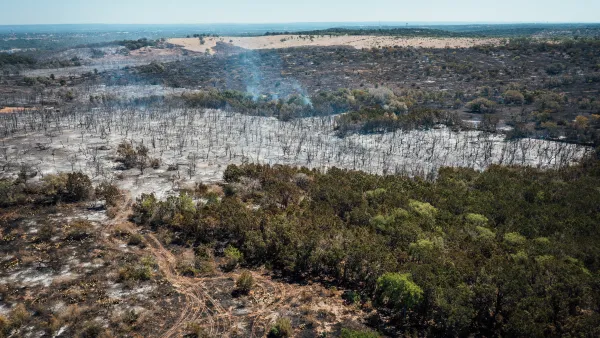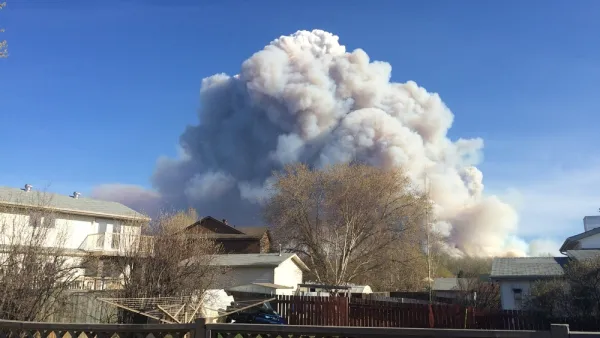The kicker in a recent article about the current realities of forest fires—and the cost of fighting them—in the United States: The federal government spends 624 percent more on fires than it did 20 years ago.
Roberto A. Ferdman reports on the insistent battle against forest fires in the United States: "More than 1.5 million acres of American forest have been burned to the ground so far this year, and that isn't even all that much. Last year, nearly 4.5 million acres were scorched; the year before, almost 9.5 million." Along a 20-year timeline, "[forest] fires have destroyed some 143 million acres since 1985, or roughly 5 million acres a year, on average."
All of that scorched earth also scorches the burden of American taxpayers: "The U.S. government now shells out some $2 billion a year just to stop them, according to the National Interagency Fire Center [pdf]. The total price, which includes wildlife preservation and land rehabilitation, is likely $1 billion to $2 billion more than that, according to estimates by research firm Headwaters Economics."
The rising cost of forest fires has left the Forest Service and the Department of the Interior with significant budget shortages and has even coined the frightening term "fire borrowing" to describe the duct-tape funding practices of federal forest fire measures.
FULL STORY: The cost of America’s forest fires has more than quintupled in the past 20 years

National Parks Layoffs Will Cause Communities to Lose Billions
Thousands of essential park workers were laid off this week, just before the busy spring break season.

Retro-silient?: America’s First “Eco-burb,” The Woodlands Turns 50
A master-planned community north of Houston offers lessons on green infrastructure and resilient design, but falls short of its founder’s lofty affordability and walkability goals.

Delivering for America Plan Will Downgrade Mail Service in at Least 49.5 Percent of Zip Codes
Republican and Democrat lawmakers criticize the plan for its disproportionate negative impact on rural communities.

Test News Post 1
This is a summary

Test News Headline 46
Test for the image on the front page.

Balancing Bombs and Butterflies: How the National Guard Protects a Rare Species
The National Guard at Fort Indiantown Gap uses GIS technology and land management strategies to balance military training with conservation efforts, ensuring the survival of the rare eastern regal fritillary butterfly.
Urban Design for Planners 1: Software Tools
This six-course series explores essential urban design concepts using open source software and equips planners with the tools they need to participate fully in the urban design process.
Planning for Universal Design
Learn the tools for implementing Universal Design in planning regulations.
EMC Planning Group, Inc.
Planetizen
Planetizen
Mpact (formerly Rail~Volution)
Great Falls Development Authority, Inc.
HUDs Office of Policy Development and Research
NYU Wagner Graduate School of Public Service





























